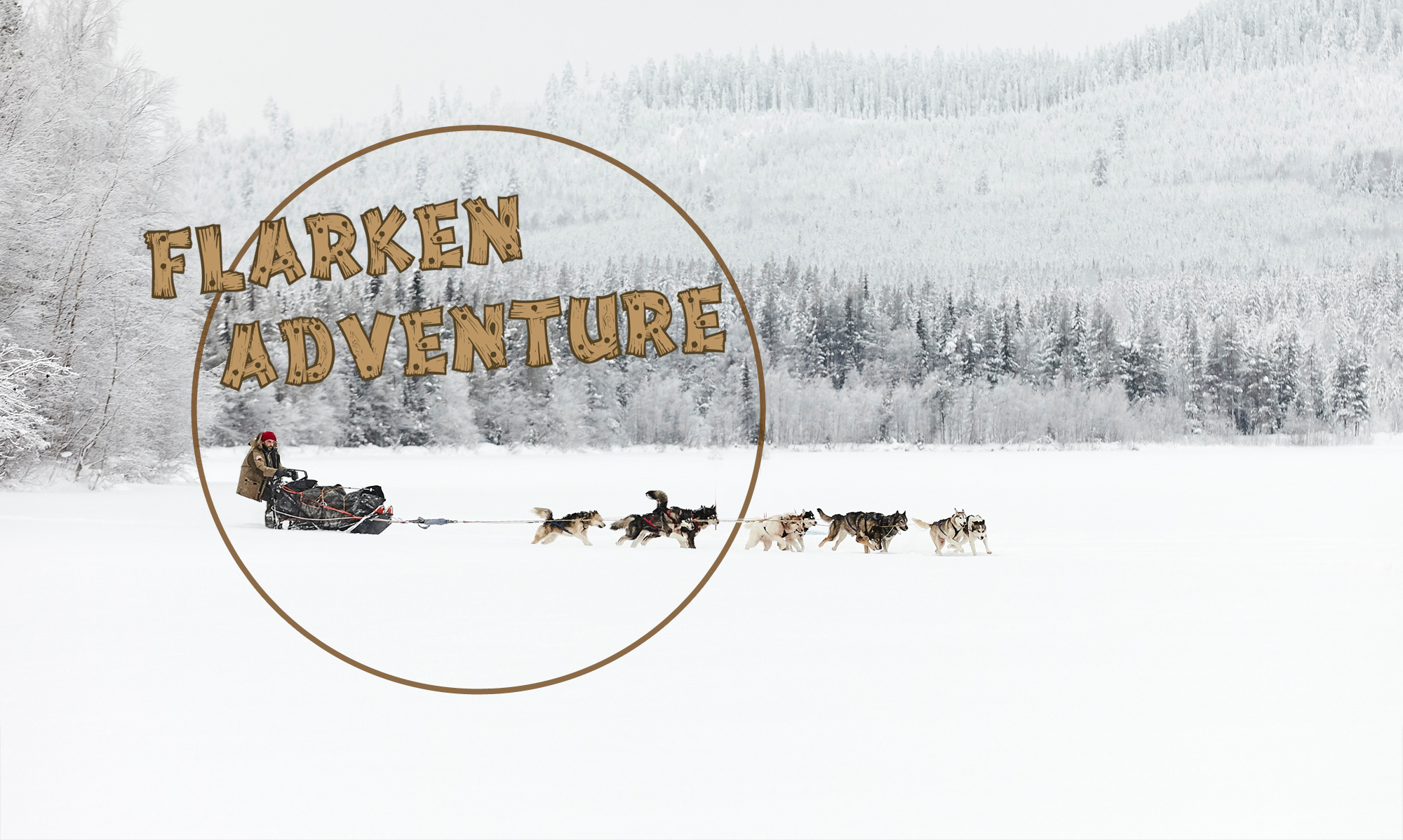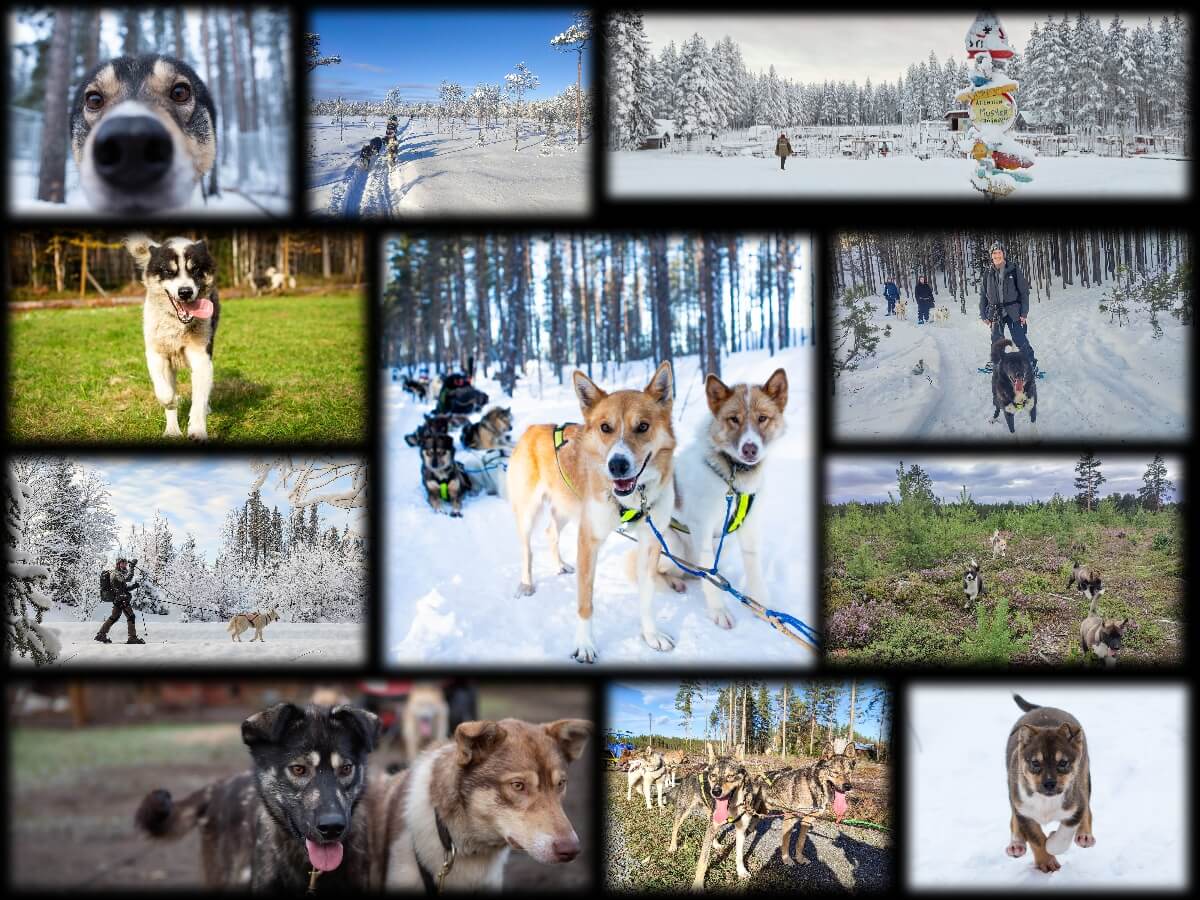Dog sledding is becoming increasingly popular. Dogs bring a whole new dimension to this sliding sport, mainly practiced in Canada, Alaska, northern Scandinavia, and also in the French mountains. Here are 10 frequently asked questions about sled dogs that our guests often ask during their stay in Swedish Lapland.
1) What makes a good sled dog?
The main quality of a sled dog is the desire to run and pull. Dogs must enjoy themselves and have fun. The required traits also depend on the work the musher does with their dogs. For us, a good sled dog needs to be enduring, consistent in effort (which means knowing how to pace themselves over long distances), strong, and have a good rhythm. Not all our dogs are equal, and we must adapt to their abilities. It’s also important that the dogs are attentive and disciplined, and that they can be handled easily by anyone.
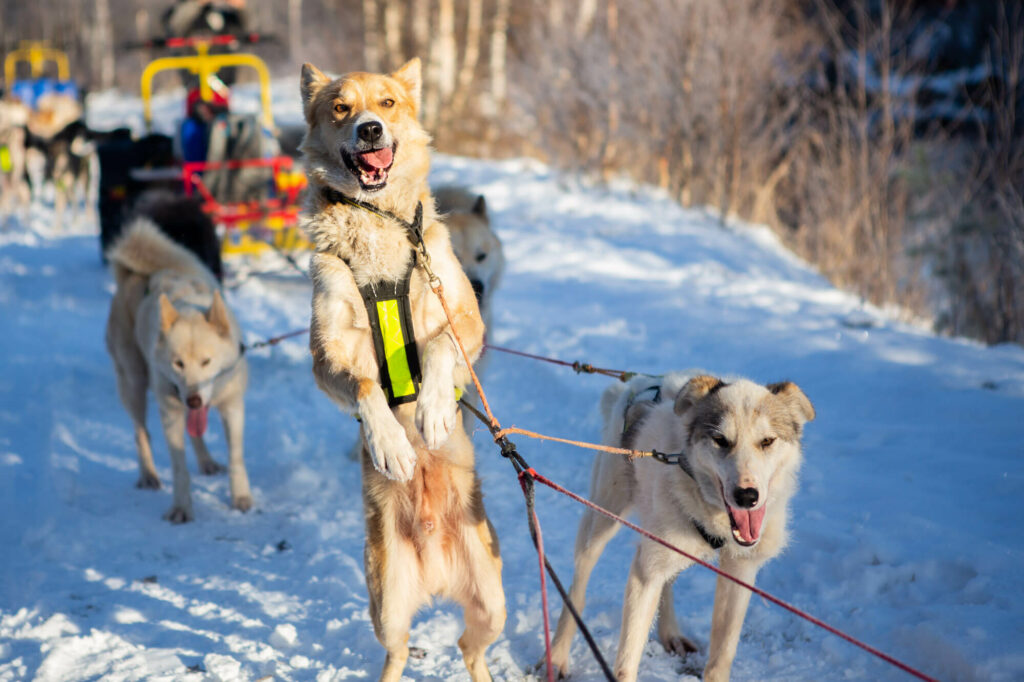
2) How does the musher communicate with the lead dog?
A sled is guided by voice, and the lead dog is, as the name implies, at the front. This dog is smart and attentive, listens, understands, and executes the musher’s commands. The relationship between a musher and their lead dog is often very strong, built on mutual trust and respect. A musher must also know when to listen and trust their lead dog. For example, a good lead dog may sense when not to venture onto fragile ice.
The most famous lead dog is Balto. In 1924, an outbreak of diphtheria hit the town of Nome, Alaska. A severe storm made all transportation—air and road—impossible. Mushers volunteered to relay the 1000 km route from Fairbanks to Nome to deliver the antidote. Balto led the final stretch and became a legend.
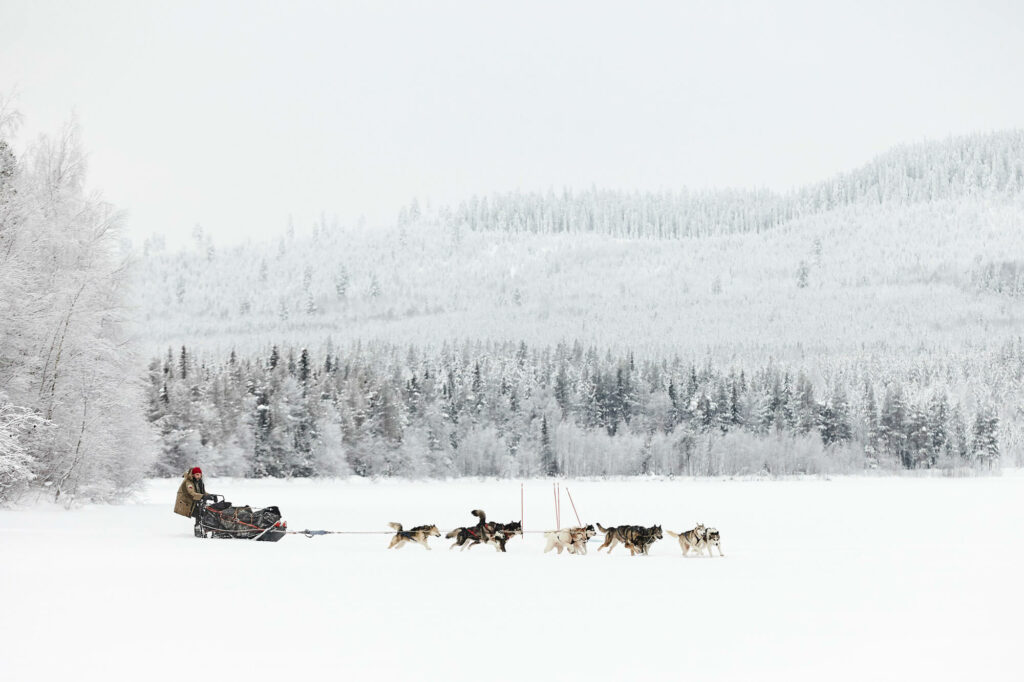
3) Is it cruel to make dogs run?
Sled dogs love to run. They are always super excited and eager at the start. They enjoy pulling and the effort is in their DNA. Some even love deep fresh snow where they have to work harder. Of course, some dogs don’t enjoy pulling. These are usually placed in homes where they can live in an environment more suited to their temperament.
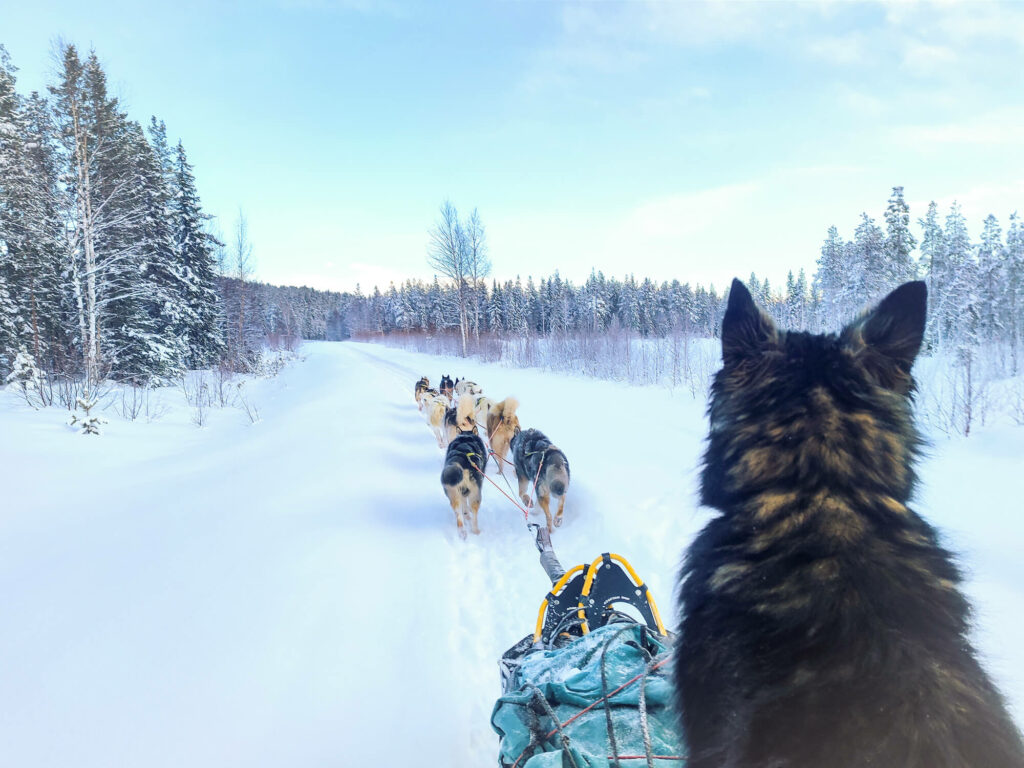
4) What do sled dogs eat?
Sled dogs are athletes, and nutrition is essential. Between the cold and physical exertion, they burn a huge amount of calories, so it’s crucial to meet their energy needs. Each musher feeds their dogs differently depending on their means, the type of work involved, and what is locally available. For example, in Alaska where rivers are full of salmon, many mushers feed salmon to their dogs. It’s rich in fat and protein. Generally, sled dogs need a diet high in fat and protein – meat and/or fish along with kibble.

5) How many kilometers can a sled dog run in a day?
It varies greatly depending on the breed, the activity, speed, and the weight being pulled. Mushers in long-distance races can cover up to 200 km per day (with breaks) at speeds between 8 and 13 km/h. Others offering short rides (for tourists) may do several short runs a day, usually with a weight limit of around 180 kg per sled.
More and more racers use “hounds” – crossbreeds of hunting dogs/pointers. These are highly athletic, fast dogs that can run 30–40 km per day at 25–30 km/h. Our own dogs run between 25 and 40 km, 5 to 6 days a week.
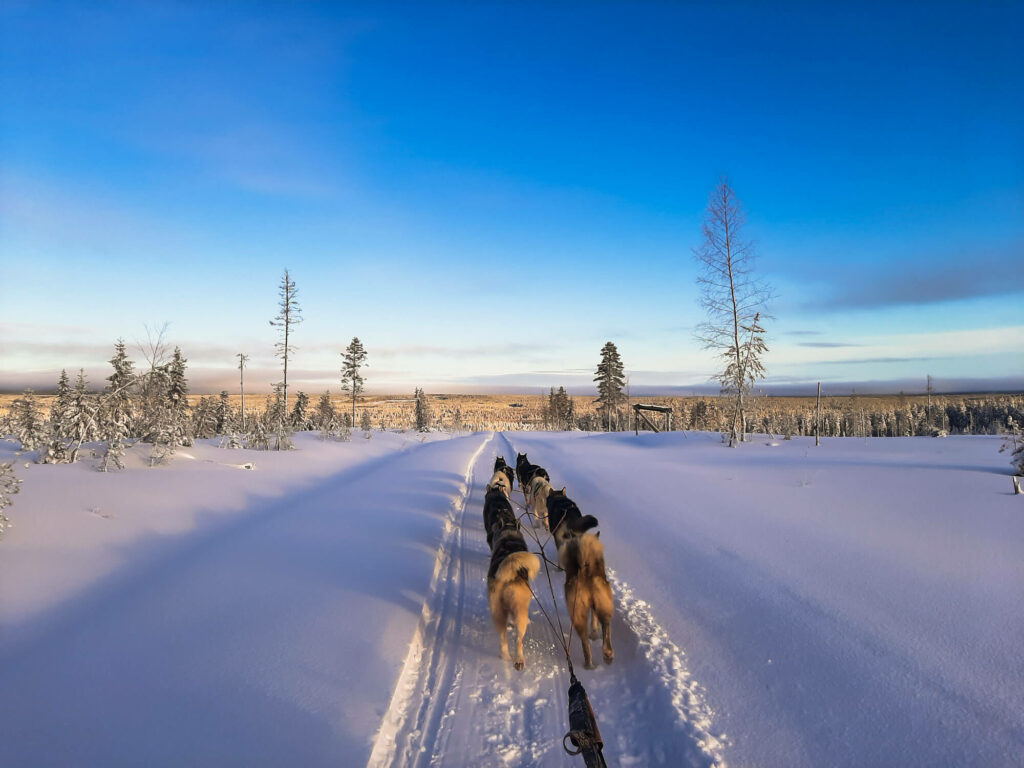
6) Do sled dogs sleep outside, even in winter?
Most sled dogs are northern breeds (Siberian Huskies, Greenland Dogs, Alaskan Malamutes, Canadian Eskimo Dogs). They develop a thick undercoat that provides excellent insulation against extreme cold. Our dogs live and sleep outdoors all winter, even in -30°C. They have well-insulated doghouses with straw bedding. During multi-day sled trips, we make them straw beds, and the less furry ones get little jackets for the night.
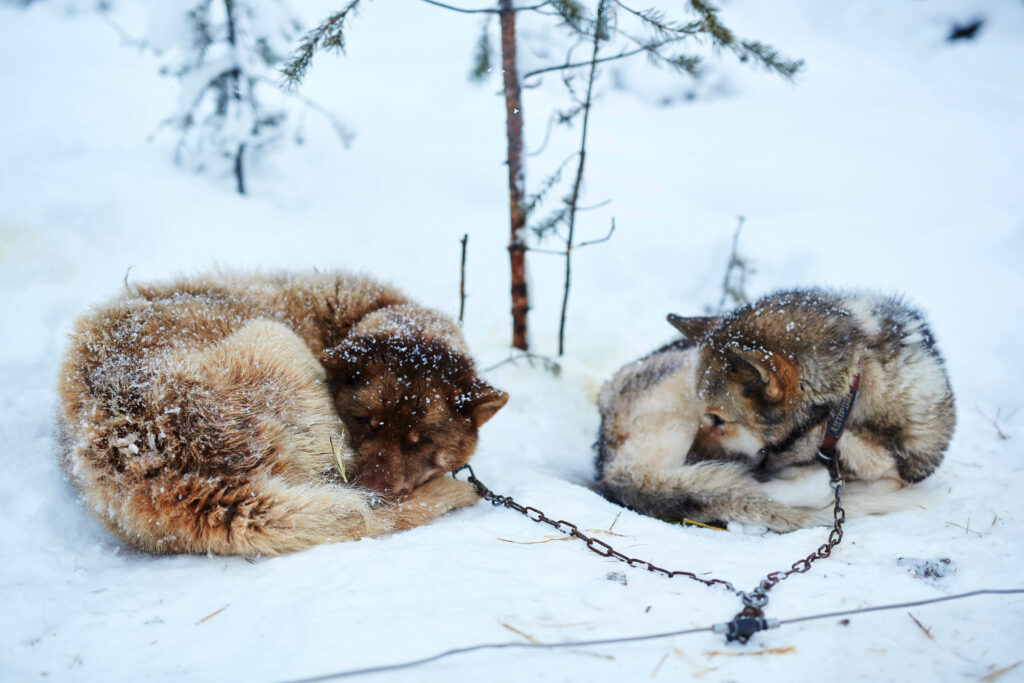
7) Are there sled dog races?
Yes, there are sled dog races. Some of the most well-known include “La Grande Odyssée” in the French Alps, the “Yukon Quest” in Canada, the “Finnmarksløpet” and “Femundløpet” in Norway, and the “Iditarod” in Alaska. There are also many smaller races in these countries, as well as French and World Championships. Other sports include skijoring (a dog pulls a skier), canicross (running with a dog), bikejoring (a dog pulls the musher on a bike), and dog scootering.
To prevent exhaustion, all mid- and long-distance races include mandatory rest stops called checkpoints, where mushers must stop and let their dogs rest. Veterinarians are present at each checkpoint to check the dogs and can disqualify any dog that appears injured (limping) or too weak (or thin) to continue. The musher carries on, and their handler (assistant) takes care of the withdrawn dogs and meets the musher at the next checkpoint by car with supplies.
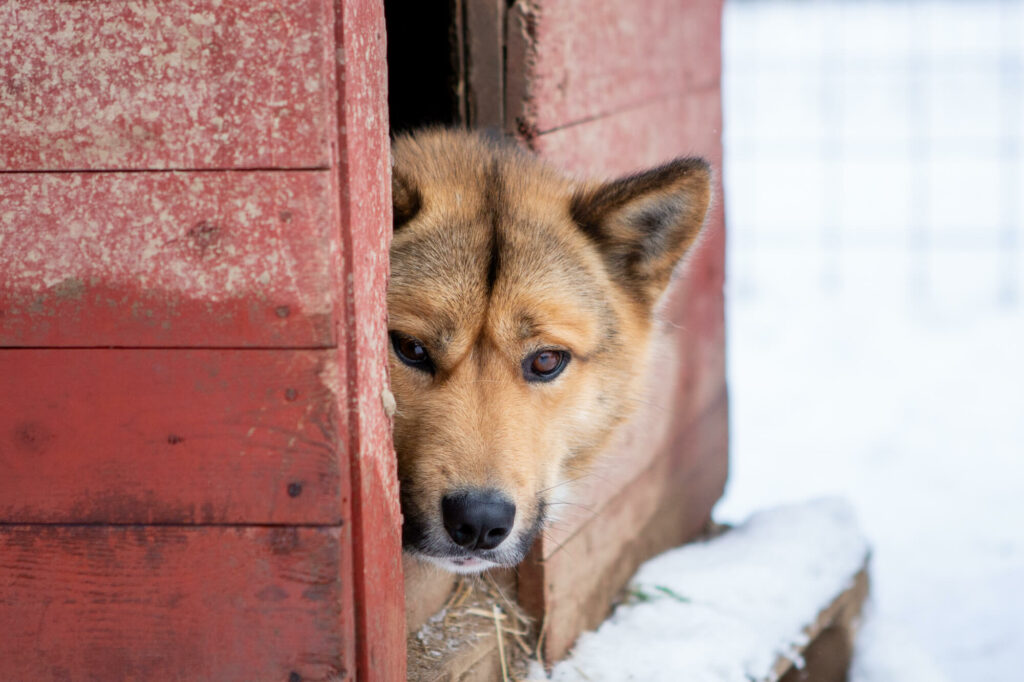
8) What activities can you do with sled dogs in summer?
Once the sleds are put away, the dogs get to rest and enjoy the warmth of spring. In summer, most sled dog operators offer cani-hiking, dog scootering, bikejoring, and cart rides.
The dogs have more free time in summer and love playing in their exercise pens or going for forest walks. Summer is also a great time for osteopath visits to ensure all dogs are healthy and ready for the next season.
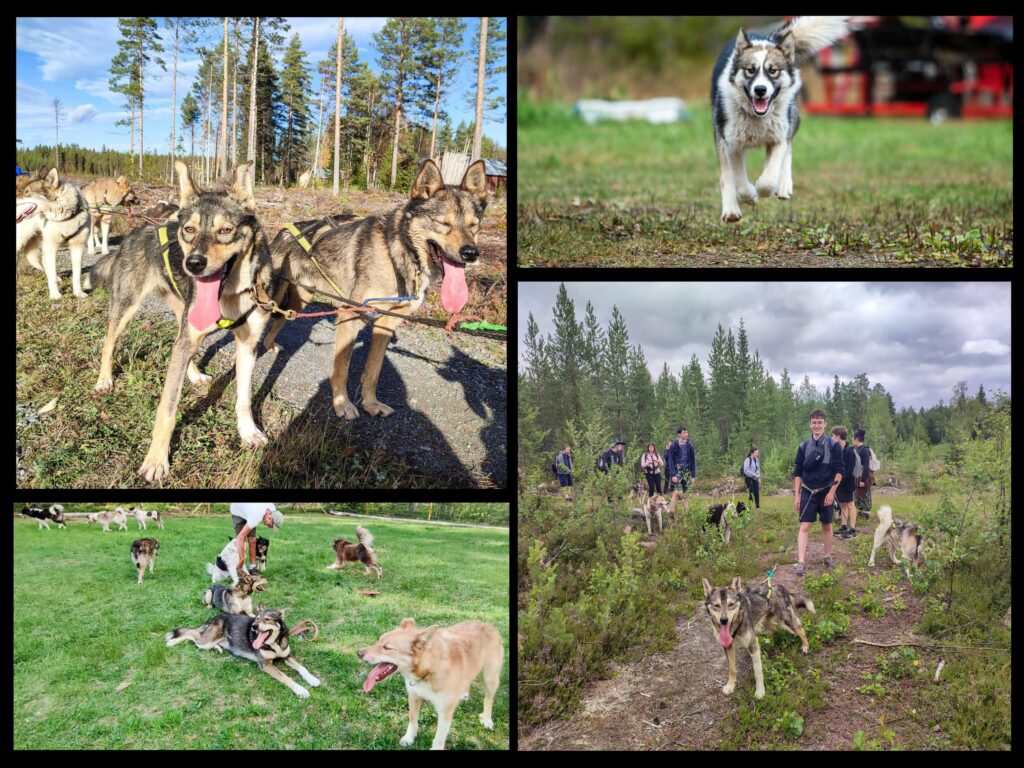
9) At what age can a sled dog start pulling, and until what age can it work?
To avoid negatively affecting their growth, it’s important not to have young dogs pull heavy loads too early. Our young dogs start around 8–9 months (sometimes later), pulling empty sleds over short distances (5–6 km). They’re harnessed with experienced adults who teach them the ropes. At about 18 months, they’re ready to work like the adults.
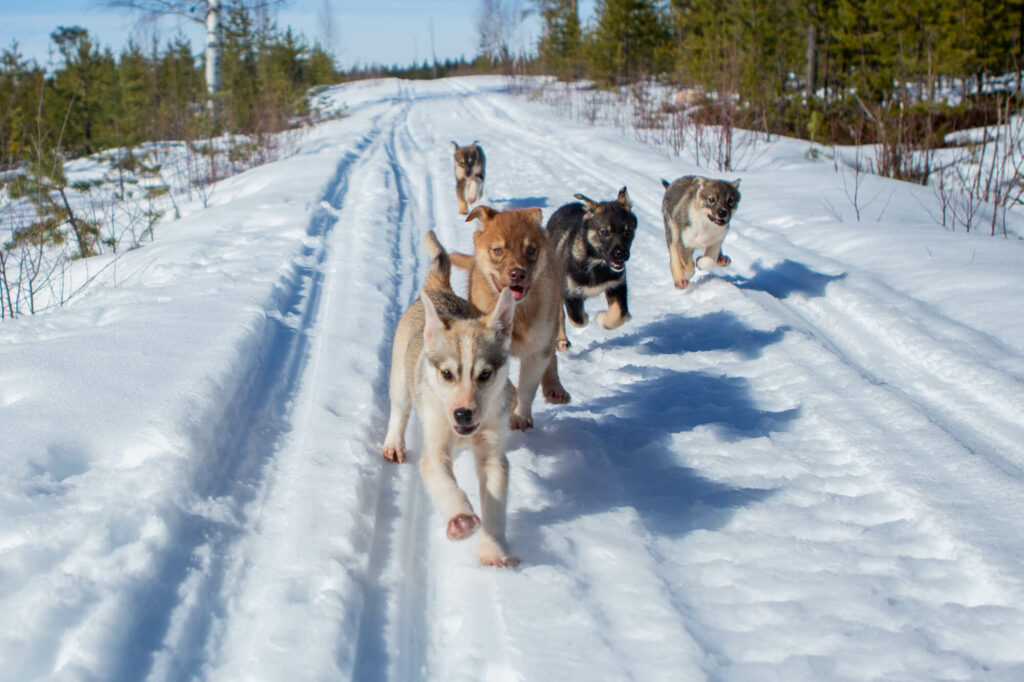
Retirement age varies. Some dogs simply lose interest in pulling and let us know. Others tire more quickly and can’t handle long distances. Those still eager to work have their workload reduced. We now offer cani-hiking or snowshoeing in winter, which lets retired dogs stay active at a gentler pace. Their motivation and strength often remain impressive. Retirement age varies between 9 and 12 years depending on the dog.
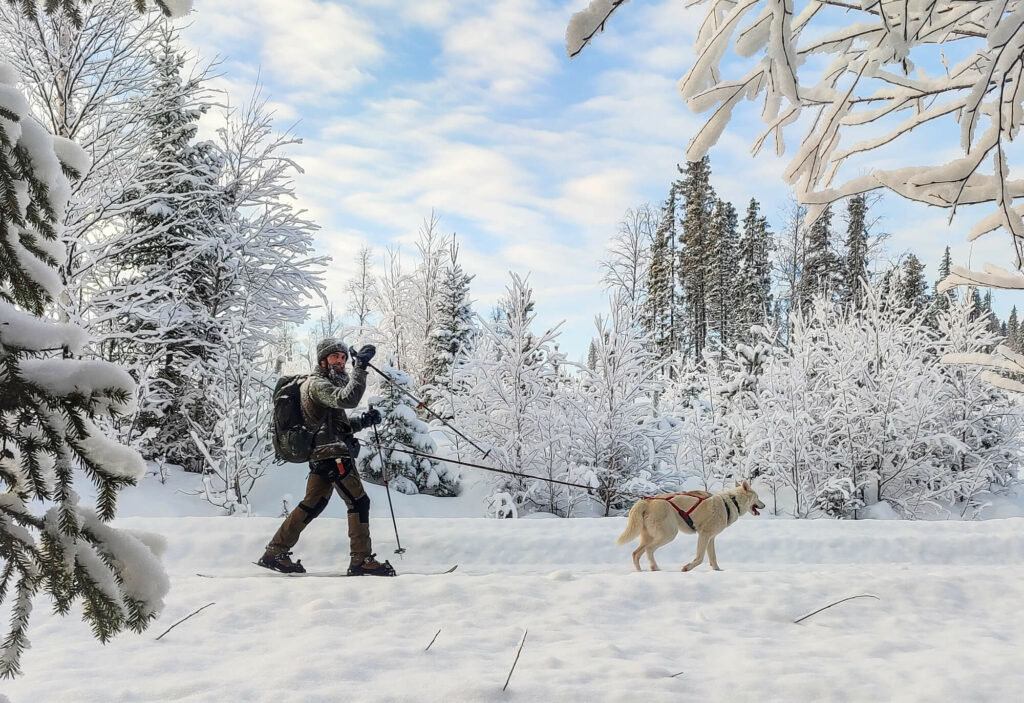
10) Can sled dogs get injured?
Like all athletes, sled dogs can suffer from sprains, muscle tears, or tendinitis. Preventing such injuries involves proper nutrition, hydration, warm-up before exercise, and sufficient rest.
Dogs can also injure their paw pads on abrasive ice or between their toes in temperatures below -15°C, when “snowballs” (ice clumps) form between their toes and stick to their fur, causing cuts. Some dogs have more sensitive paws, so we protect them with booties and apply healing balm or paw wax.
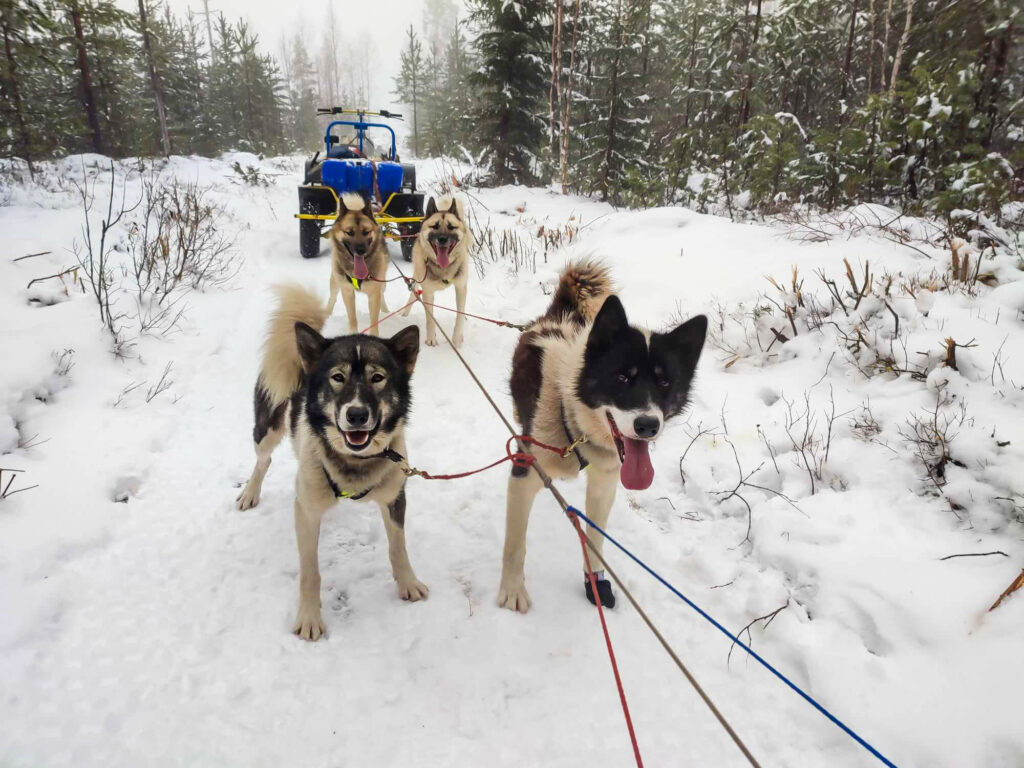
Read also :
SLED DOG BREEDS: THE MAIN ARCTIC WORKING DOGS
This post is also available in:  Français
Français
